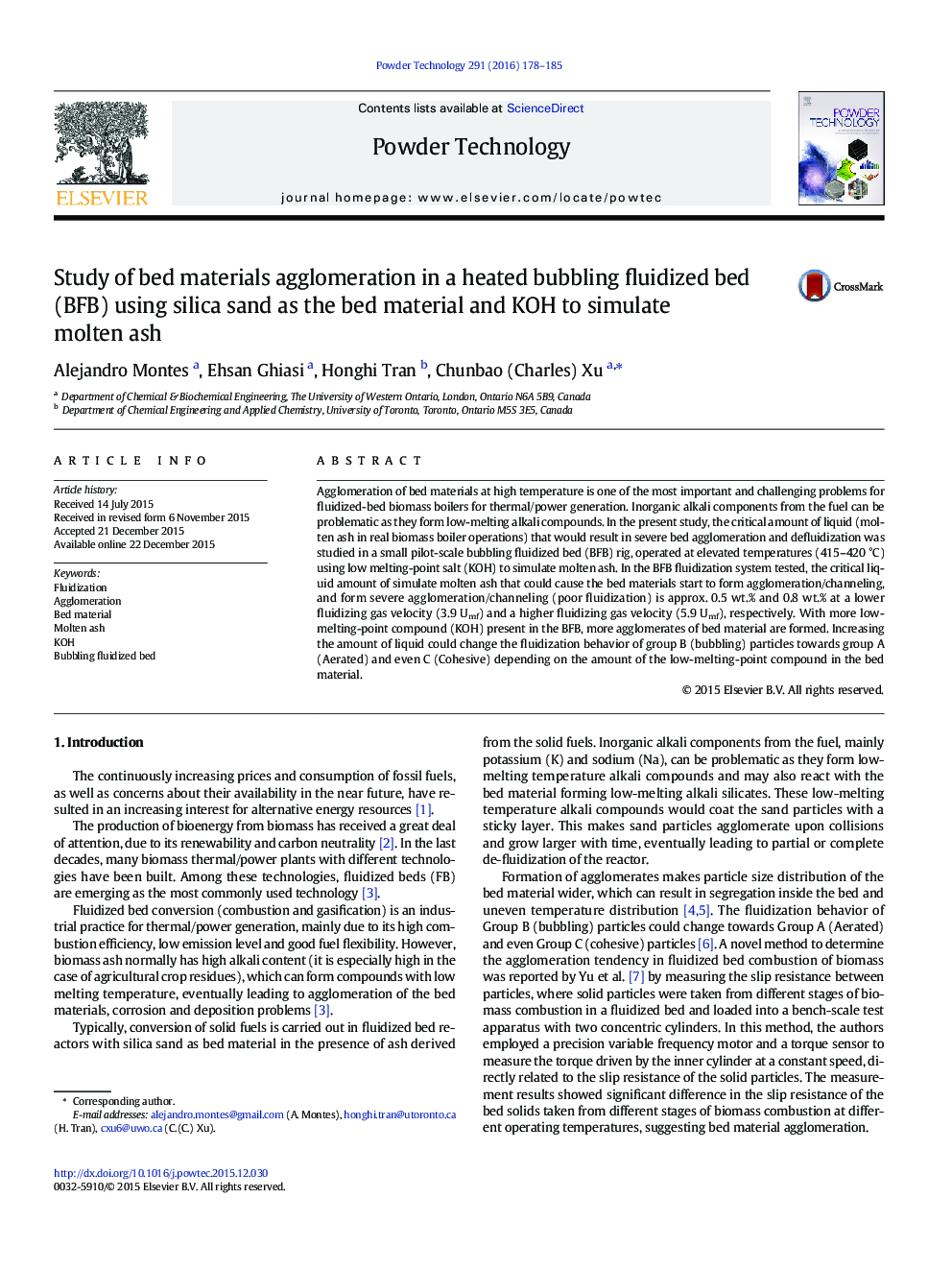| Article ID | Journal | Published Year | Pages | File Type |
|---|---|---|---|---|
| 235006 | Powder Technology | 2016 | 8 Pages |
•This work aimed to study agglomeration of bed materials for BFB biomass boilers.•KOH was used to simulate molten ash in a fluidized bed of silica sands at ~ 420 °C.•The bed materials at 3.9 Umf formed severe agglomeration/channeling at 0.5 wt.% KOH.•The bed materials at 5.9 Umf formed severe agglomeration/channeling at 0.8 wt.% KOH.
Agglomeration of bed materials at high temperature is one of the most important and challenging problems for fluidized-bed biomass boilers for thermal/power generation. Inorganic alkali components from the fuel can be problematic as they form low-melting alkali compounds. In the present study, the critical amount of liquid (molten ash in real biomass boiler operations) that would result in severe bed agglomeration and defluidization was studied in a small pilot-scale bubbling fluidized bed (BFB) rig, operated at elevated temperatures (415–420 °C) using low melting-point salt (KOH) to simulate molten ash. In the BFB fluidization system tested, the critical liquid amount of simulate molten ash that could cause the bed materials start to form agglomeration/channeling, and form severe agglomeration/channeling (poor fluidization) is approx. 0.5 wt.% and 0.8 wt.% at a lower fluidizing gas velocity (3.9 Umf) and a higher fluidizing gas velocity (5.9 Umf), respectively. With more low-melting-point compound (KOH) present in the BFB, more agglomerates of bed material are formed. Increasing the amount of liquid could change the fluidization behavior of group B (bubbling) particles towards group A (Aerated) and even C (Cohesive) depending on the amount of the low-melting-point compound in the bed material.
Graphical abstractTemperature & pressure in the BFB tests at 3.9 Umf with different wt.% of KOH in the bed.Figure optionsDownload full-size imageDownload as PowerPoint slide
